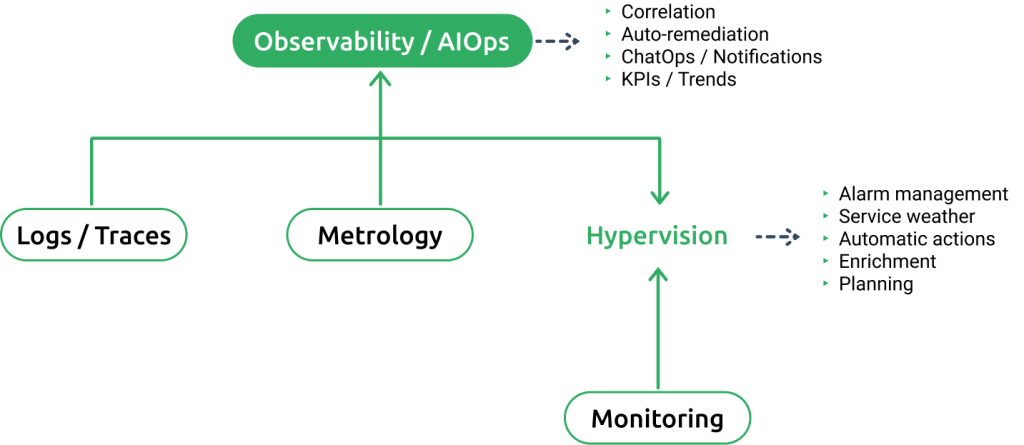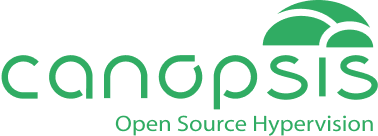At Canopsis, IT hypervision is more than just a concept – it’s our core business! While we’ve touched on this notion several times in our articles, it’s high time we dedicated one just for it.
Today, explore with us the background, definition, benefits and current trends of hypervision. Get ready to improve the performance of your information system!
The challenges of a large-scale IS
An information system is usually made up of heterogeneous historical components and new technologies. Integrated over time, these elements are necessary for optimal operation. However, they also generate a lack of visibility, notably due to the compartmentalization of multiple solutions.
This software diversity affects supervision tools in particular. A large number of irrelevant alerts are then presented to the teams, and ticket management becomes complex.
And that’s where IT hypervision comes in!
But what is hypervision?
An advanced form of monitoring, IT hypervision provides global IS visibility.
To begin with, it brings together all data from supervision, application and repository solutions, with links to other IT service management (ITSM) tools.
Then, hypervision transforms the events received (filtering, enrichment…) and carries out actions automatically, semi-automatically or by the user (correlation, remediation, ticketing…).
Finally, it presents this information in alarm lists, reports, maps…
In short, it’s the control tower of your information system!
The benefits of hypervision for your IS
IT hypervision offers many advantages for infrastructure management.
The ability to supervise the entire information system from a single interface greatly facilitates day-to-day management of operations.
Basically, hypervision presents the right information to the right person at the right time.
This means greater responsiveness to incidents. The result is improved service availability and reliability!
By identifying components requiring special attention (recurring breakdowns, erratic behavior, etc.), IT hypervision also enables better anticipation of needs in terms of infrastructure maintenance and upgrades.
Finally, hypervision facilitates strategic decision-making to optimize performance and costs, thanks to the production of statistics and KPIs.
Current trends in IT hypervision
Hypervion, like many technical subjects, is constantly evolving to meet the new needs of companies in terms of monitoring and managing IT infrastructures.
First of all, we’re seeing a growing use of artificial intelligence and machine learning to improve incident detection, triage and resolution via task automation.
Another notable point is that hypervision is becoming an essential component of observability. It gathers a great amount of data that can help you understand recurring problems in your IS and anticipate risky situations.
Read our full article on the role of IT hypervision in observability here.

To conclude
With the increasing complexity of information systems, IT hypervision is becoming a necessity for all large-scale organizations.
Global vision of the IS, improved service availability, optimized response times… The benefits are numerous, and hypervision is constantly evolving to meet the needs of businesses.
Would you like to find out more? Contact our experts.
Since 2011, Canopsis has been the world’s leading open source hypervision solution!
Robust and scalable, our feature-rich platform offers you a single ergonomic interface for managing your entire IS.
Fewer alarms, faster and easier incident resolution, relevant KPIs… Choosing Canopsis for your IT hypervision is the assurance of a high quality and transparent solution at the right price.

